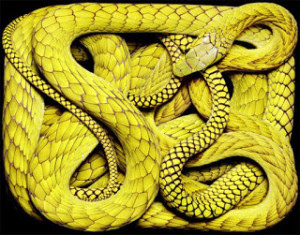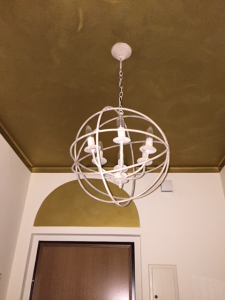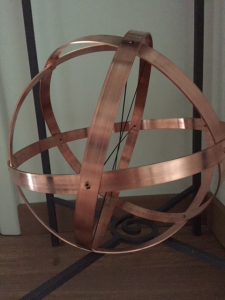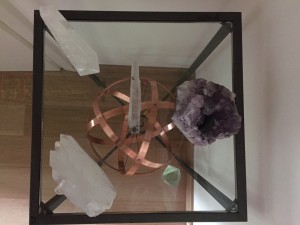The center of the house with Feng Shui: how to furnish the area of the house corresponding to the center of the Chinese Compass (Ba Gua), fundamental point for the circulation of Qi energy.
We have seen in some previous articles how to solve the problem of the center of gravity when the shape of the house or apartment is not regular. This time we’ll see how to furnish the center of the house according to Feng Shui when a central space is available.
In ancient Chinese tradition the cardinal directions have always been marked by the Four Cosmic Animals. As illustrated in the text The Red Thread of Feng Shui, there are archelogical evidences showing an astronomical correspondence between the Four Animals and the Chinese constellations appearing on the horizon at equinoxes and solstices, thus marking the seasons with respect to the solar cycle. A series of symbols, also represented by colors, is associated to the following directions: black to the north, green to the east, red to the south and white to the west. In later times an animal and a color were also added to represent the center of the Ba Gua: the snake and the yellow. The snake is the symbol of Kundalini in India, a vital energy emanatingfrom the perineal region and climbing up through all the other six chakras until reaching the head.
So Qi energy can be managed as well for the house as for the body: it must be able to circulate in a harmonious way in all directions, accumulated and purified starting from the center, which must be empty, not cluttered with objects and furnishings, to allow Qi to be free and powerful.
According to Wuxing the element corresponding to the Center of the House is the Earth, and some authors associate it with Health and Wellness. It is therefore clear and evident that this area is fundamental for the balance of the house. How to manage this space?
If the plan of the house is regular and the entrance is directed towards the center, most likely there will be a space corresponding to an atrium or entrance. This is the best situation, because in this case we could use different tools to manage and orient Qi, even using a Feng Shui methodology to furnish the Center of the House in a complete way.This involves the choice of a chandelier and an “ad hoc” color for the walls.
In the following image you can see a decoration of the House Center with Feng Shui, carefully executed according both to furnishing details and to the maximization of energy.
In Fig.1, in addition to the golden ceiling, a half-moon in the same color was created: it changes the geometry of the entrance door according to a favorable Chinese form. At the center of the ceiling a chandelier is hanging, with a spherical symmetry well representing the symbology of the center, taken up again and enhanced by an orgonic instrument known as Genesa Crystal (Fig.2).
It is a device based on sacred geometry, reproducing different universal forms: the stage of the eight-cell embryo, the Platonic solids, the flower of life, the Methatron cube; for more information and details you can consult Il Cielo di Nut. In this illustrated example it is positioned at the Center of the House together with a series of very powerful crystals (Fig.3)
Looking at Fig. 3 from a top view perspective, a generator quartz can be seen at the bottom left corner, an octahedral fluorite crystal in the middle of the right side, a quartz laser rod in the center, an amethyst druse just below the last two,and a prism of quartz on the upper left corner. Down on the floor lies the Genesa Crystal.
If the Center of the House is not a manageable space and is next to a wall or in a room occupied by other elements of furniture that do not allow to place instruments of the type described here, we should find other simpler solutions such as images of the Mandala-type center, already indicated in other articles.



